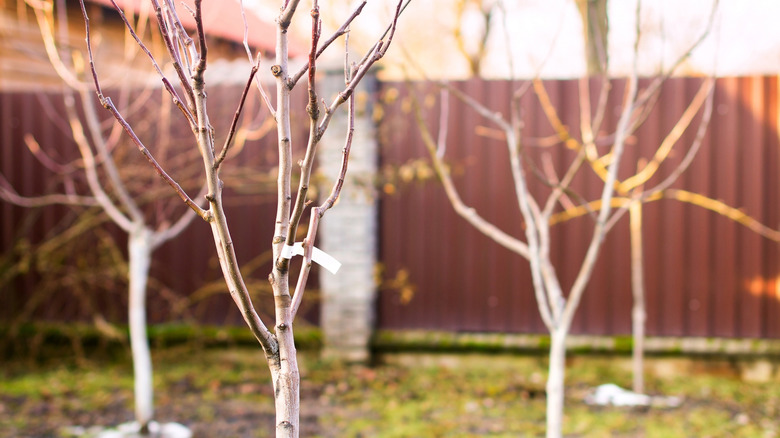The Fruit Tree Variety That Is Perfect For Urban Gardens & Smaller Homes
Urban gardeners may believe that fruit trees require sprawling yards or a full orchard to grow well, but that's not always the case. For smaller homes that have compact gardens and less space for trees, plum trees are one of the most ideal choices. Even though knowing how to grow a plum tree in your yard as a beginner gardener can be difficult at first, plum trees are actually very easy to grow and adapt well to a variety of soil types.
Plum trees stay at a modest height of 16 to 20 feet, which makes them ideal for small gardens, patios, and courtyards. Dwarf cultivars, which may reach 14 feet at most, can even be trained as espaliers, doubling as living art while producing fruit at eye level. European plum trees (Prunus domestica) and Japanese plum trees (Prunus salicina) are known to grow well in small spaces like residential gardens, and there are several cultivars that are appropriate for various climates in the United States.
While Japanese varieties like 'Ozark Premier' Japanese plums (Prunus salicina 'Ozark Premier') favor warmer climates, specifically USDA zones 5 to 9, European varieties like the Damson (Prunus domestica subsp. insititia 'Shropshire Prune') are better for gardens in zones 5 to 7 and grow fruit more reliably. While there are many companion plants you can grow to encourage a healthier plum tree, plum tree yields are known to increase when varieties of plum trees are planted next to one another.
How to make your plum tree the ideal shape for your small garden
For gardeners who are working with tight spaces, training trees as espaliers allows for a productive and more flexible approach to gardening. This centuries-old pruning method, perfected in Europe and still practiced today, trains branches horizontally along a trellis or fence. Start with just a couple of one- or two-year-old dwarf trees, build a trellis with wires 18 inches apart, and prune them regularly through the growing season to shape branches and promote fruiting spurs.
Because plum trees are one of the fruit trees that are perfect to espalier, they're an excellent choice for gardens with tight spaces. They reward urban gardeners with tidy, sculptural growth and accessible harvests. Given that you need to plant fruit trees like plums near each other for cross-pollination, taking advantage of this unique way of growing trees means that you'll be able to get to your fruit more easily.
Plum varieties typically demand full sun and well-drained soil, but they also need regular watering every two to three weeks through the dry season to ensure that the trees continue to regularly bear fruit. With the right setup — including some sturdy supports for your trees and consistent care — you'll be able to transform even a narrow side yard into a mini-orchard in bloom. While training trees to grow in a certain way does require a fair bit of patience, the result is more than worth it for urban gardeners with small gardens.

